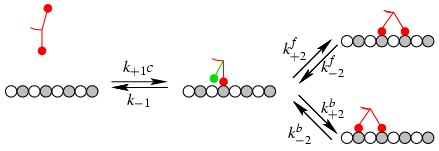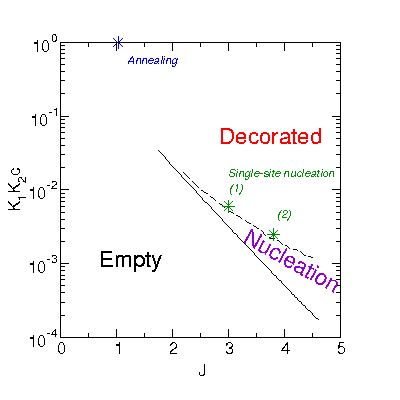2. Model defintion
A kinesin dimer can bind with one head or with both heads. The transition rates are the following:

- k+1 c (1-n cTubulin / c) Association rate for the first head
- k+2b Association rate for the second head left of the first one
- k+2f Association rate for the second head right of the first one
- k-2b Dissociation rate for the left head of a double-bonded dimer
- k-2f Dissociation rate for the right head of a double-bonded dimer
- k-1 Dissociation rate for a single-bonded dimer
These rates relate to the binding constants for the first (K1) and the second (K1) head in the following way:
K1 = k+1 /
k-1
K2 = k+2f /
k-2f = k+2b /
k-2b.

Two dimers bound next to each other on the same protofilament or beside each other on neighboring protofilaments are subject to an attractive interaction with strength JL (longitudinal) or JT (transverse). Two dimers bound on neighboring protofilaments shifted by one tubulin subunit (8nm) are not subject to any interaction.
Each bound neighbour influences the attachment rate of a head by the factor AL,T and the detachment rate by the factor BL,T. The interaction constants relate to these factors as
JL=kBT ln(AL / BL )
JT=2kBT ln(AT / BT )
